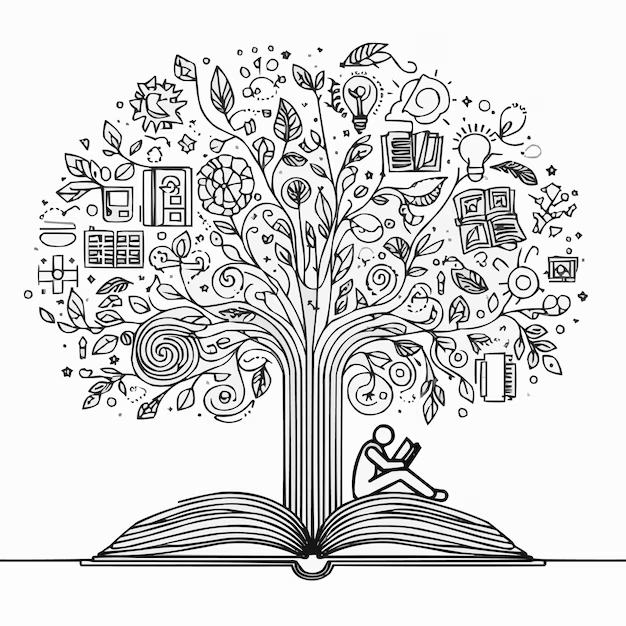
In linguistics, grammar is the set of rules for how a natural language is structured, as demonstrated by its speakers or writers. Grammar rules may concern the use of clauses, phrases, and words. The term may also refer to the study of such rules, a subject that includes phonology, morphology, and syntax, together with phonetics, semantics, and pragmatics. There are, broadly speaking, two different ways to study grammar: traditional grammar and theoretical grammar.
Fluency in a particular language variety involves a speaker internalizing these rules, many or most of which are acquired by observing other speakers, as opposed to intentional study or instruction. Much of this internalization occurs during early childhood; learning a language later in life usually involves more direct instruction. The term grammar can also describe the linguistic behaviour of groups of speakers and writers rather than individuals. Differences in scale are important to this meaning: for example, English grammar could describe those rules followed by every one of the language’s speakers. At smaller scales, it may refer to rules shared by smaller groups of speakers.
A description, study, or analysis of such rules may also be known as a grammar, or as a grammar book. A reference work describing the grammar of a language is called a reference grammar or simply a grammar. A fully revealed grammar, which describes the grammatical constructions of a particular speech type in great detail is called descriptive grammar. This kind of linguistic description contrasts with linguistic prescription, a plan to marginalize some constructions while codifying others, either absolutely or in the framework of a standard language. The word grammar often has divergent meanings when used in contexts outside linguistics. It may be used more broadly to include orthographic conventions of written language, such as spelling and punctuation, which are not typically considered part of grammar by linguists; that is, the conventions used for writing a language. It may also be used more narrowly to refer to a set of prescriptive norms only, excluding the aspects of a language’s grammar which do not change or are clearly acceptable (or not) without the need for discussions.
History
Further information: History of linguistics
The first systematic grammar of Sanskrit originated in Iron Age India, with Yaska (6th century BC), Pāṇini (6th–5th century BC) and his commentators Pingala (c. 200 BC), Katyayana, and Patanjali (2nd century BC). Tolkāppiyam, the earliest Tamil grammar, is mostly dated to before the 5th century AD. The Babylonians also made some early attempts at language description.
Grammar appeared as a discipline in Hellenism from the 3rd century BC forward with authors such as Rhyanus and Aristarchus of Samothrace. The oldest known grammar handbook is the Art of Grammar (Τέχνη Γραμματική), a succinct guide to speaking and writing clearly and effectively, written by the ancient Greek scholar Dionysius Thrax (c. 170 – c. 90 BC), a student of Aristarchus of Samothrace who founded a school on the Greek island of Rhodes. Dionysius Thrax’s grammar book remained the primary grammar textbook for Greek schoolboys until as late as the twelfth century AD. The Romans based their grammatical writings on it and its basic format remains the basis for grammar guides in many languages even today. Latin grammar developed by following Greek models from the 1st century BC, due to the work of authors such as Orbilius Pupillus, Remmius Palaemon, Marcus Valerius Probus, Verrius Flaccus, and Aemilius Asper.
The grammar of Irish originated in the 7th century with Auraicept na n-Éces. Arabic grammar emerged with Abu al-Aswad al-Du’ali in the 7th century. The first treatises on Hebrew grammar appeared in the High Middle Ages, in the context of Midrash (exegesis of the Hebrew Bible). The Karaite tradition originated in Abbasid Baghdad. The Diqduq (10th century) is one of the earliest grammatical commentaries on the Hebrew Bible. Ibn Barun in the 12th century, compares the Hebrew language with Arabic in the Islamic grammatical tradition.
Belonging to the trivium of the seven liberal arts, grammar was taught as a core discipline throughout the Middle Ages, following the influence of authors from Late Antiquity, such as Priscian. Treatment of vernaculars began gradually during the High Middle Ages, with isolated works such as the First Grammatical Treatise, but became influential only in the Renaissance and Baroque periods. In 1486, Antonio de Nebrija published Las introduciones Latinas contrapuesto el romance al Latin, and the first Spanish grammar, Gramática de la lengua castellana, in 1492. During the 16th-century Italian Renaissance, the Questione della lingua was the discussion on the status and ideal form of the Italian language, initiated by Dante’s de vulgari eloquentia (Pietro Bembo, Prose della volgar lingua Venice 1525). The first grammar of Slovene was written in 1583 by Adam Bohorič, and Grammatica Germanicae Linguae, the first grammar of German, was published in 1578.

Leave a Reply